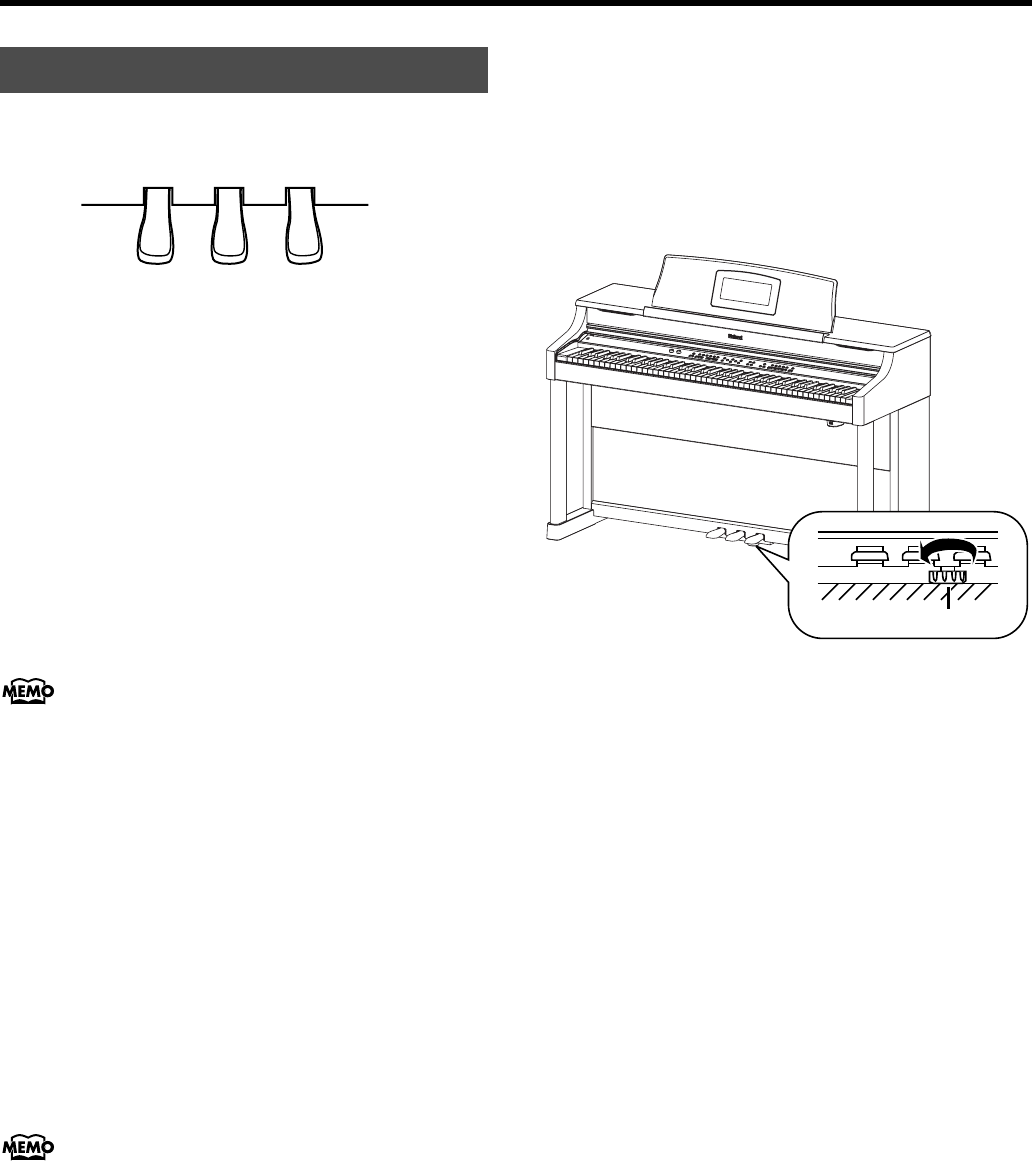
29
Basic Operation and the Main Screen
The pedals have the following functions, and are used mainly for
piano performance.
fig.pedal-e
Damper Pedal (right pedal)
Use this pedal to sustain the sound.
While this pedal is pressed, notes will be sustained even after you
take your fingers off the keys.
The length of sustain will change subtly depending on how deeply you
press the pedal.
On an acoustic piano, holding down the damper pedal will allow the
remaining strings to resonate in sympathy with the sounds that you
played from the keyboard, adding a rich resonance.
The HPi-7S simulates this damper resonance.
You can adjust the amount of damper resonance that occurs
when you press the damper pedal. Refer to “Adjusting
Resonance when the Damper Pedal is Depressed (Damper
Resonance)” (p. 87).
Sostenuto Pedal (center pedal)
This pedal sustains only the sounds of the keys that were already
played when you pressed the pedal.
Soft Pedal (left pedal)
This pedal is used to make the sound softer.
When you hold down this pedal and play the keyboard, the sound
will have a softer tone. This is the same function as the left pedal of an
acoustic piano.
The softness of the tone can be varied subtly by the depth to which
you press the pedal.
The Sostenuto pedal and Soft pedal can be given functions
other than these. Refer to “Notation Screen” (p. 26) and
“Changing the Pedal Functions (Pedal)” (p. 91).
About the Adjuster
If you feel that the pedal is unstable (for example if you’ve moved the
HPi-7S to a different location), you can adjust the adjuster located on
the bottom of the pedals as follows.
• Rotate the adjustor to lower it so that it is in firm contact with the
floor. If there is a gap between the pedals and the floor, the pedals
may be damaged. In particular when placing the instrument on
carpet, adjust this so that the pedals firmly contact the floor.
fig.adjuster-e
About the Pedals
Soft Pedal
Sostenuto Pedal
Damper Pedal
Adjuster
HPi-7S-e.book 29 ページ 2007年8月27日 月曜日 午後2時39分


















